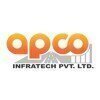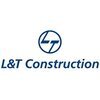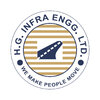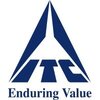Filter interviews by
AMR INDIA Safety Incharge Interview Questions and Answers
AMR INDIA Safety Incharge Interview Experiences
1 interview found
I applied via Referral and was interviewed in Nov 2023. There were 3 interview rounds.

(2 Questions)
- Q1. Safety Engineer job discussion
- Q2. What is safety, safety professional
- Ans.
Safety is the practice of preventing accidents, injuries, and hazards in order to protect individuals and promote a secure environment.
Safety is the implementation of measures and protocols to minimize risks and ensure the well-being of individuals.
Safety professionals are responsible for identifying potential hazards, developing safety policies, and training employees on safety procedures.
Examples of safety measures i...
(1 Question)
- Q1. Which institute pass
Top trending discussions






Interview questions from similar companies

I was interviewed in Jan 2025.
(2 Questions)
- Q1. What is hira ?
- Q2. What is ua/uc.
(2 Questions)
- Q1. What is jsa. & LOTo system.
- Q2. What is material handling.How many types of Material handing.
Interview Preparation Tips

(1 Question)
- Q1. Tell me about yourself and your experience in safety.
(4 Questions)
- Q1. How is man lost days calculated?
- Q2. What is FR, SR, IR how does it gets calculated?
- Q3. What will you do to improve safety culture?
- Q4. What innovation strategies have been put so far to improve safety standards in the previous project?
(2 Questions)
- Q1. How much you were drawing last and what are your expectations?
- Q2. How soon can you join?
- Ans.
I can join your team within two weeks.
I am currently wrapping up my current projects and can transition smoothly within two weeks.
I have no prior commitments that would delay my start date.
I am excited about the opportunity to join your team and contribute to the safety initiatives.
I am available to start immediately if needed.
Interview Preparation Tips
- Safety Management System,
- Incident management
- Investigation
- PDCA
- Leadership Skills
2. Full day process
3. Snaks and tea in every 2 hours during the whole procedure
4. Professional and friendly staff
5. 3 rounds 1st is introduction, 2nd technical, 3rd HR

I applied via Approached by Company and was interviewed in Nov 2024. There were 2 interview rounds.
(3 Questions)
- Q1. What is safety and how does it relate to hazards?
- Ans.
Safety is the state of being free from harm or danger, while hazards are potential sources of harm or danger.
Safety refers to the measures taken to prevent accidents, injuries, or illnesses in the workplace or any environment.
Hazards are potential sources of harm or danger that can cause accidents, injuries, or illnesses.
Safety measures are implemented to identify, assess, and control hazards to minimize risks and ensu...
- Q2. What are the role and responsibilities of HSE officer
- Ans.
HSE officers are responsible for ensuring health, safety, and environmental regulations are followed in the workplace.
Developing and implementing health and safety policies
Conducting regular inspections and risk assessments
Training employees on safety procedures
Investigating accidents and incidents
Ensuring compliance with local, state, and federal regulations
- Q3. What do you mean by Hira
- Ans.
HIRA stands for Hazard Identification and Risk Assessment. It is a systematic process for identifying potential hazards and evaluating the associated risks.
HIRA involves identifying hazards in the workplace or environment.
It includes assessing the risks associated with each hazard.
The goal of HIRA is to implement control measures to mitigate or eliminate the identified risks.
Examples of hazards include chemical exposur
(1 Question)
- Q1. What is the definition of safety and how does it relate to hazards?
- Ans.
Safety is the state of being free from harm or danger, while hazards are potential sources of harm or danger.
Safety refers to the condition of being protected from harm or danger
Hazards are potential sources of harm or danger that can cause accidents or injuries
Safety measures are put in place to mitigate or eliminate hazards
Examples of hazards include slippery floors, exposed electrical wires, and toxic chemicals
Interview Preparation Tips

Safety Engineer Interview Questions & Answers
ITD Cementation Indiaposted on 9 Aug 2024
(2 Questions)
- Q1. Scaffolding erection and dismantling
- Q2. Crane and lifting tools and tackles

I applied via LinkedIn and was interviewed in Mar 2024. There was 1 interview round.
(2 Questions)
- Q1. What are Hazards of Work at Height ?
- Ans.
Hazards of work at height include falls, falling objects, unstable surfaces, and weather conditions.
Falls from height can result in serious injuries or fatalities
Objects falling from height can cause harm to workers below
Unstable surfaces such as ladders or scaffolding can lead to slips or falls
Weather conditions like wind or rain can increase the risk of accidents
Improper use of safety equipment can also contribute to
- Q2. What is Hazard Control Hierarchy ?
- Ans.
Hazard Control Hierarchy is a system used to prioritize and implement control measures to reduce or eliminate workplace hazards.
Hierarchy of controls ranks control measures from most effective to least effective: Elimination, Substitution, Engineering Controls, Administrative Controls, Personal Protective Equipment (PPE)
The goal is to eliminate or reduce hazards at the source rather than relying on PPE
Example: Instead ...
Interview Preparation Tips

Senior Electrical Engineer Interview Questions & Answers
URC Constructionposted on 20 Aug 2024
(1 Question)
- Q1. MEP DESIGN RELATED QUESTION

Safety Officer Interview Questions & Answers
Simplex Infrastructuresposted on 18 Nov 2023

(1 Question)
- Q1. Salary Discussed
(2 Questions)
- Q1. What is Responsibility of Safety Officer
- Ans.
Safety Officer is responsible for ensuring the safety of employees, implementing safety protocols, conducting safety inspections, and promoting a culture of safety in the workplace.
Implementing safety protocols and procedures
Conducting safety inspections and audits
Training employees on safety practices
Investigating accidents and incidents
Ensuring compliance with safety regulations
Promoting a culture of safety in the wo
- Q2. Site Monetring. Training conducted Site Inspection Follow Legal Compliance Hazard identify and apply Suitable control measure to reduce hazard Tools Takles Inspection mock drill

Senior Safety Supervisor Interview Questions & Answers
H.G. Infra Engineeringposted on 5 Dec 2023
I applied via Walk-in

Site related safety issues and discuss for permit system and use of PPEs like this
(4 Questions)
- Q1. My details & How many years of experience
- Ans. My name Mr Dilip kumar patidar Now I am work for Fire and safety Supervisor
- Q2. What is your current salary
- Q3. How many salary accept
- Q4. How many type of fire extinguisher
- Ans.
There are five main types of fire extinguishers: water, foam, powder, CO2, and wet chemical.
Water fire extinguishers are suitable for Class A fires involving solid materials like wood or paper.
Foam fire extinguishers are effective for Class A and B fires, which involve flammable liquids like petrol or oil.
Powder fire extinguishers can be used on Class A, B, C, and electrical fires. They are versatile but can cause a lo...

I was interviewed in Jul 2022.

(2 Questions)
- Q1. I was interviewed for Transmission & Distribution Profile Q1 - Please walk us through your CV and your roles in the various projects ? Q2 - Tell us about design calculations of EHV Cables. How you come up ...
- Q2. Q15 - Concepts of HVDC & Offshore Connections
- Ans.
HVDC is a technology used to transmit high voltage DC power over long distances. Offshore connections refer to power transmission from offshore wind farms.
HVDC is more efficient than AC transmission over long distances
Offshore connections require specialized equipment and installation techniques
HVDC is used for offshore connections to transmit power from offshore wind farms to the mainland
Examples of HVDC projects incl...
Interview Preparation Tips
- Grounding
- Cable Sizing
- Battery Charger
- Transformers
- Power Transmission
Go through these topics
1. Grounding Design details
2. Battery Charger sizing step by step process
3. Cable Ampacity and SVL calculation.
AMR INDIA Interview FAQs
Tell us how to improve this page.
AMR INDIA Interviews By Designations
- AMR INDIA Junior Engineer Interview Questions
- AMR INDIA Assistant Accounts Manager Interview Questions
- AMR INDIA GST Executive Interview Questions
- AMR INDIA Mechanical Foreman Interview Questions
- AMR INDIA Pget Interview Questions
- AMR INDIA Safety Incharge Interview Questions
- AMR INDIA Senior Surveyor Interview Questions
- AMR INDIA Work from Home-NON IT Recruitment Interview Questions
- Show more
Interview Questions for Popular Designations
- Safety Engineer Interview Questions
- Safety Manager Interview Questions
- Senior Safety Officer Interview Questions
- Senior Safety Engineer Interview Questions
- Safety Officer Interview Questions
- Fire & Safety Officer Interview Questions
- Safety Supervisor Interview Questions
- Fire & Safety Supervisor Interview Questions
- Show more
AMR INDIA Safety Incharge Interview Process
based on 1 interview
Interview experience
Interview Questions from Similar Companies
AMR INDIA Safety Incharge Reviews and Ratings
based on 1 review
Rating in categories
|
Assistant Manager
15
salaries
| ₹5.4 L/yr - ₹9.3 L/yr |
|
Mining Engineer
15
salaries
| ₹4.6 L/yr - ₹7 L/yr |
|
Civil Site Engineer
10
salaries
| ₹1.8 L/yr - ₹5.4 L/yr |
|
Assistant Manager- HR
7
salaries
| ₹3.6 L/yr - ₹5.5 L/yr |
|
HR Manager
7
salaries
| ₹7.7 L/yr - ₹10 L/yr |

BHEL

TCS

Reliance Industries

Infosys
- Home >
- Interviews >
- AMR INDIA Interview Questions >
- AMR INDIA Safety Incharge Interview Questions











